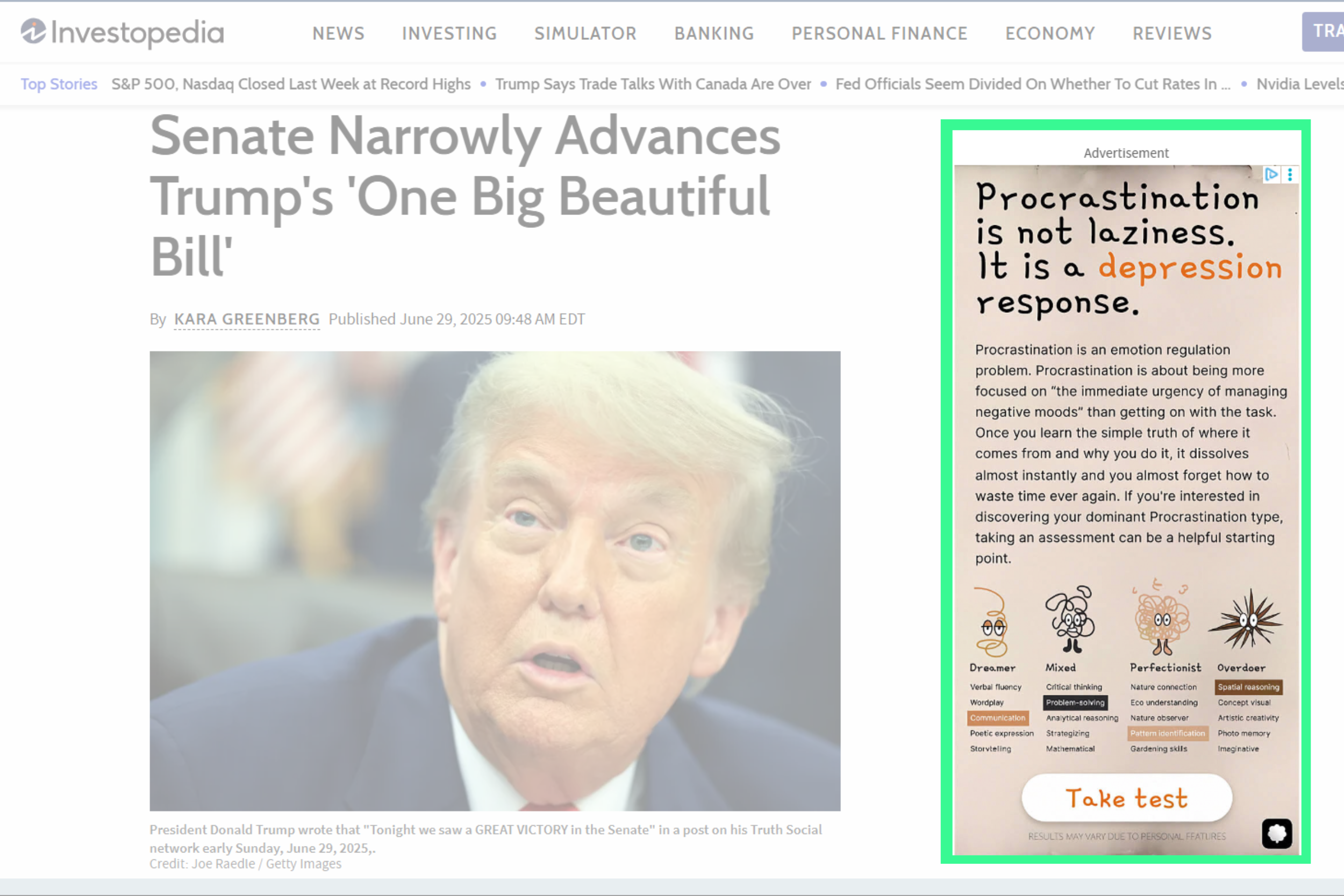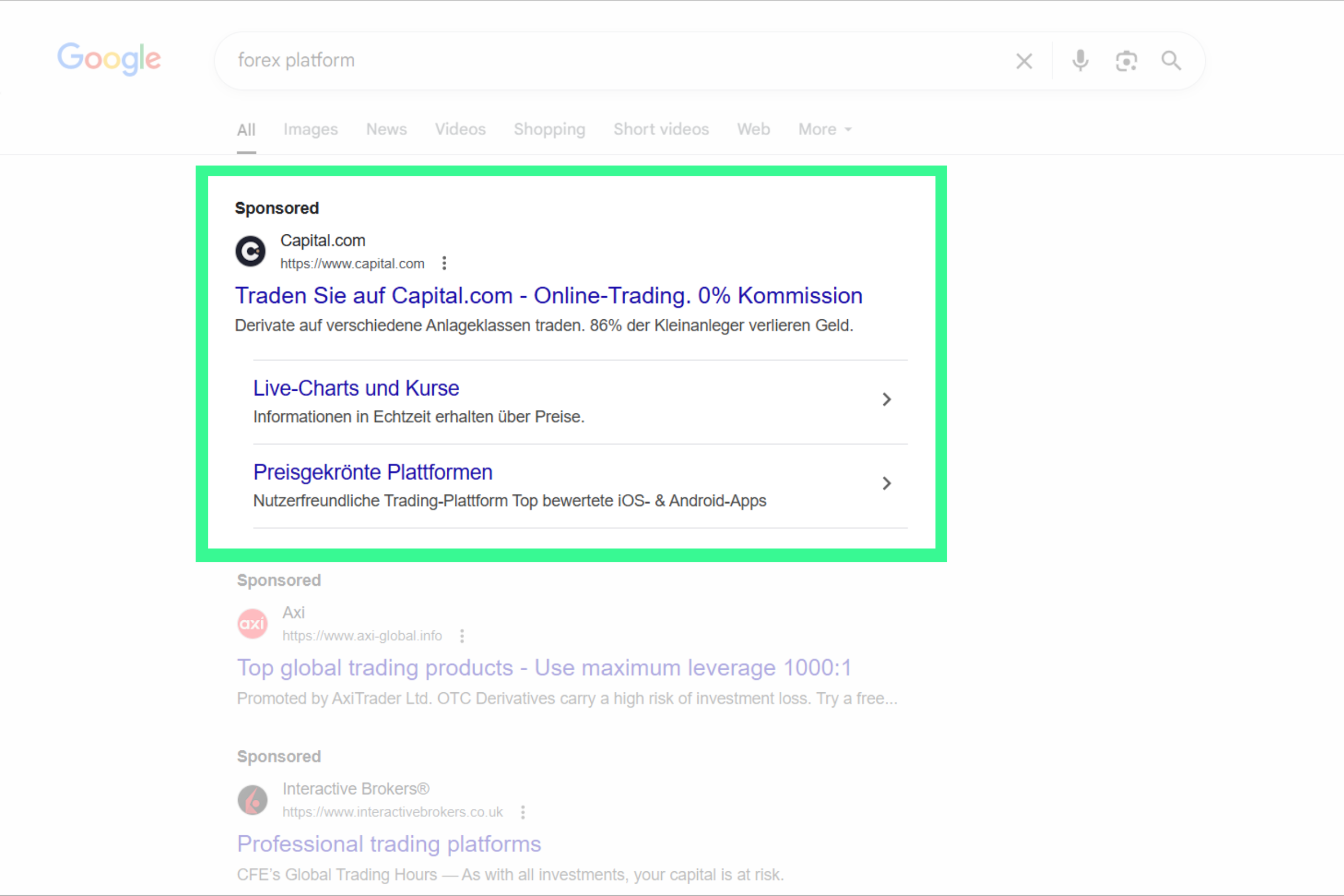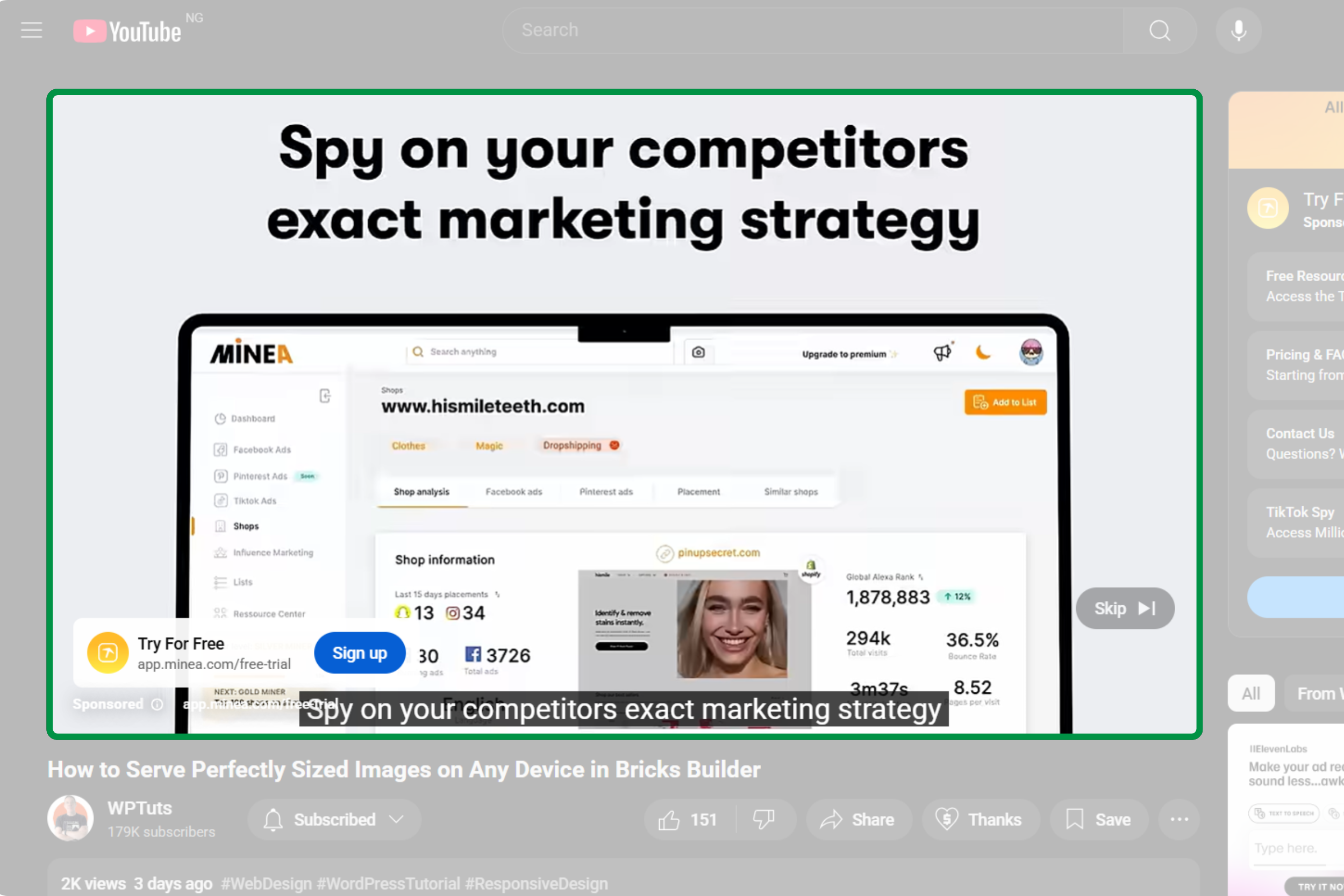Die 10 wichtigsten Arten digitaler Werbung
Überschrift
- Cointelegraph Formula bietet 8 Millionen monatlichen Lesern in über 190 Ländern verschiedene Anzeigenformate an und nutzt dabei seinen vertrauenswürdigen Namen in Sachen Krypto.
Digitale Werbung existiert in vielfältigen Ausprägungen. Hier präsentieren wir die 10 wichtigsten Online-Werbeformen, mit denen Unternehmen ihre Zielgruppen erreichen und ihre Markenbekanntheit steigern.
- Display-Werbung
- Suchanzeigen
- Social-Media-Werbung
- Video-Werbung
- Native-Werbung
- In-App-Werbung
- CTV-Werbung
- Affiliate-Werbung
- E-Mail-Werbung
- Audio-Werbung
Diese Werbeformate verdeutlichen die Evolution der digitalen Werbung, die sich kontinuierlich an neue Medienformate und veränderte Nutzergewohnheiten anpasst. Im Jahr 2025 dominiert digitale Werbung die globalen Werbeausgaben mit über 75% Anteil am gesamten Werbemarkt von 1,8 Billionen USD.
Für Einsteiger empfehlen wir unseren Leitfaden zur digitalen Werbung, der Funktionsweise und Vorteile umfassend erläutert. Zusammengefasst umfasst digitale Werbung alle auf Online-Plattformen erstellten Anzeigen zur Bewerbung von Produkten und Dienstleistungen.
Im Folgenden erläutern wir jeden Online-Werbetyp detailliert.
1. Display-Werbung
Display-Werbung, auch als Banner-Werbung bezeichnet, kombiniert typischerweise Bilder, Texte und gelegentlich Animationen (Rich Media). Diese visuellen Banner erscheinen auf Websites, Blogs und mobilen Apps:

Diese Anzeigen werden üblicherweise über Plattformen wie Blockchain-Ads und das Google Display Network vertrieben.
Banner-Werbung existiert in verschiedenen Dimensionen, wobei die beliebtesten Formate sind:
- 300x250 Pixel
- 728x90 Pixel
- 160x600 Pixel
Weitere Formate und deren Spezifikationen finden Sie in unseren Inhalten zu Display-Werbeformaten.
Eine weitere Kategorie bildet Rich-Media-Werbung. Diese Anzeigenart verleiht Display-Kampagnen mehr Dynamik und Attraktivität gegenüber statischen Bannern.
Rich-Media-Formate umfassen:
- Schwebende oder Pop-up-Anzeigen
- In-Banner-Video-Anzeigen
- Interstitial-Anzeigen
- Expandierbare Banner-Werbung
Ein Beispiel ist eine Display-Anzeige, die sich beim Überfahren mit der Maus erweitert und Interaktion ermöglicht, ohne die Seite zu verlassen.
2. Suchmaschinen-Werbung
Suchanzeigen sind bezahlte Anzeigen, die in den oberen oder unteren Bereichen der Suchergebnisseiten (SERPs) bei Nutzersuchanfragen erscheinen.
Suchanzeigen targeting spezifische, von Nutzern eingegebene Keywords und sind typischerweise textbasiert:

Suchanzeigen funktionieren über Auktionsverfahren, bei denen Werbetreibende für hochintentionale Suchanfragen bieten. Dies gewährleistet hohe Relevanz, da Nutzer zum Zeitpunkt größten Interesses erreicht werden.
Neben reinen Textanzeigen stehen weitere Formate zur Verfügung:
- Responsive Suchanzeigen
- Dynamische Suchanzeigen
- Anruf-only-Anzeigen
- Discovery-Anzeigen
- Shopping-Anzeigen
Suchanzeigen können über Google Ads und Microsoft Advertising geschaltet werden. Unser Suchanzeigen-Leitfaden bietet detaillierte Erklärungen dieses digitalen Werbetyps.
3. Social-Media-Werbung
Social-Media-Anzeigen sind bezahlte Inhalte, die in Nutzer-Feeds, Stories oder spezifischen Bereichen sozialer Plattformen erscheinen. Sie targeting demografische Merkmale, Interessen und Verhaltensweisen spezifischer Zielgruppen:

Social-Media-Anzeigen bieten verschiedene Formate: reine Textinhalte, Bilder, Karussells, Videos oder interaktive Anzeigen.
Diese Werbeform trägt typischerweise "Gesponsert"-Kennzeichnungen, fügt sich jedoch nahezu nativ in die Plattform-Ästhetik ein.
Social-Media-Werbung eignet sich besonders für Awareness-Kampagnen, da Nutzer neue Produkte direkt in ihren Feeds entdecken. Unsere Social-Media-Werbung-Inhalte bieten umfassende Erklärungen zur Umsetzung dieses digitalen Werbetyps.
4. Video-Werbung
Video-Anzeigen sind kurze Werbefilme, die Unternehmen zur Bewerbung ihrer Produkte oder Dienstleistungen produzieren. Sie zielen darauf ab, Aufmerksamkeit zu generieren und zur Kaufhandlung oder Markenerkundung zu motivieren.
Video-Anzeigen sind omnipräsent: vor YouTube-Videos, auf Social-Media-Plattformen wie Instagram und TikTok, auf Websites und in mobilen Spielen. Ihre Laufzeit variiert zwischen wenigen Sekunden und mehreren Minuten.
Video-Anzeigen kombinieren Visuals, Audio, Musik und Text für Storytelling oder Produktpräsentationen. Sie übertreffen gewöhnliche Bildanzeigen in der Engagement-Rate durch Produktdemonstration, Storytelling und emotionale Verbindungen zu Zuschauern.
Video-Werbung umfasst verschiedene Varianten: In-Stream-, Out-Stream-, Native- und Rewarded-Anzeigen. Zusätzlich existieren Social-Media-, Shoppable-, Suchergebnis-Video- und Over-the-Top-Anzeigen.
Die zwei Hauptansätze sind:
- In-Stream
- Out-Stream
In-Stream-Anzeigen werden innerhalb von Videoinhalten abgespielt. Diese sind bekannt von YouTube und Streaming-Plattformen wie Hulu und Netflix – Clips vor, während oder nach gewählten Videos.
Vor dem Inhalt abgespielte Anzeigen heißen Pre-Roll-Anzeigen. Mittig erscheinende nennt man Mid-Roll (häufig bei längeren Videos). Post-Roll-Anzeigen folgen am Ende.

Out-Stream-Anzeigen sind unabhängige Videos, die in Artikeln oder beim Scrollen durch Blogbeiträge erscheinen. Diese benötigen kein Host-Video und werden über Werbeplattformen wie Blockchain-Ads ausgeliefert:

Sie starten stumm und automatisch, ohne den Content-Flow zu stören. Audio aktiviert sich bei Nutzerinteraktion durch Klick oder Hover.
5. Native-Werbung
Native-Werbung ist ein verbreiteter digitaler Werbetyp, der sich nahtlos in Plattform-Inhalte integriert und deren Erscheinungsbild, Haptik und Zweck entspricht.
Native-Anzeigen erscheinen auf Websites, Apps, in Suchergebnissen und Social-Media-Feeds. Sie tragen "Gesponsert"- oder "Promoted"-Kennzeichnungen, ähneln jedoch regulären Inhalten.
Native-Werbung umfasst verschiedene Formate, wobei drei Hauptformen dominieren:
- In-Feed-Native-Anzeigen
- Gesponserte Artikel
- Content-Recommendation-Widgets
In-Feed-Anzeigen gehören zu den häufigsten Native-Werbeformen. Diese integrieren sich direkt in Social-Media-Feeds oder News-Websites und ähneln regulären Posts oder Artikeln stark. Nutzer erkennen die Werbeabsicht nicht unmittelbar.
Ein weiteres populäres Format sind gesponserte Artikel, auch als Branded Content bekannt. Diese Langform-Beiträge werden auf etablierten Publisher-Websites gehostet und bieten Insights oder Geschichten, die mit der Markenbotschaft verknüpft sind.
Der dritte Typ umfasst Recommendation-Widgets oder "Weitere interessante Artikel"-Bereiche. Diese erscheinen häufig unterhalb von Artikeln mit aufmerksamkeitsstarken Überschriften.
Unser Native-Werbung-Leitfaden erläutert diesen digitalen Werbetyp detailliert.
6. In-App-Werbung
In-App-Anzeigen gewinnen an Popularität, da sie Unternehmen ermöglichen, Nutzer in ihren häufigsten Aufenthaltsorten zu erreichen – mobilen Applikationen. Dieser Werbetyp funktioniert in Casual Games, Streaming-Apps oder anderen Anwendungen.
Apps nutzen verschiedene Anzeigenformate, wobei die effektivsten Typen umfassen:
- Interstitial-Anzeigen
- Rewarded-Video-Anzeigen
- Playable-Anzeigen
Interstitial-Anzeigen erscheinen während natürlicher Unterbrechungen, beispielsweise nach Level-Abschlüssen oder Tab-Wechseln. Sie übernehmen kurzzeitig den Bildschirm und zeigen nach kurzem Countdown eine Schließen-Schaltfläche.
Rewarded-Video-Anzeigen verfolgen einen anderen Ansatz. Nutzer erhalten die Wahlmöglichkeit, kurze Videos zu betrachten und Gegenleistungen zu erhalten. In Gaming-Apps können dies zusätzliche Leben oder Bonus-Münzen sein. Dieses Format ist erfolgreich, da Nutzer freiwillig partizipieren und den Mehrwert erkennen.
Playable-Anzeigen sind interaktive Vorschauen, besonders häufig im mobilen Gaming. Sie ermöglichen Nutzern, App-Versionen vor der Installation zu testen. Anstelle reiner Promo-Betrachtung erleben Nutzer die Funktionsweise, was zu qualitativ hochwertigeren Installationen und engagierteren Spielern führt.
7. Connected-TV-Werbung
CTV-Anzeigen sind Video-Werbespots für internetverbundene Fernseher über Streaming-Plattformen wie Netflix, Hulu, YouTube TV oder Roku. Diese erscheinen vor, während oder nach Streaming-Content, ähnlich traditionellen TV-Werbespots.
Die Auslieferung erfolgt jedoch über Internet statt Kabel- oder Satellitensignale. Werbetreibende können spezifische Zielgruppen präziser erreichen, beispielsweise Sportausrüstungs-Werbung für Sport-Enthusiasten.
CTV-Werbung wächst rasant, da sich Konsumenten vom Kabelfernsehen abwenden. 2023 besaßen 88% der US-Haushalte mindestens ein internetverbundenes TV-Gerät. CTV-Werbeausgaben stiegen seit 2019 um nahezu 400%, was das explosive Wachstum dieses Werbeformats demonstriert.
8. Affiliate-Werbung
Affiliate-Anzeigen sind kosteneffektive Werbeinhalte, erstellt von Partnern (Affiliates), die durch Bewerbung anderer Unternehmensprodukte oder -dienstleistungen Geld verdienen. Bei Link-Klicks und Käufen erhalten Affiliates Provisionen, typischerweise prozentual vom Verkaufswert.
Affiliate-Anzeigen finden sich häufig auf Blogs, YouTube-Videos, Social Media und Review-Websites. Beispielsweise könnte ein Tech-Blogger das neueste Smartphone reviewen und spezielle Kauflinks einbinden. Link-Klicks und Käufe generieren Blogger-Einnahmen.
Diese Anzeigen erscheinen oft als regulärer Content, müssen jedoch Disclaimer wie "Gesponsert", "Affiliate-Link" oder "Ich erhalte möglicherweise eine Provision" enthalten.
Unser Affiliate-Werbung-Leitfaden erklärt, weshalb dieser Marketing-Ansatz Win-Win-Situationen schafft:
- Unternehmen gewinnen Kunden über vertrauenswürdige Influencer und Content-Creators
- Affiliates monetarisieren durch Empfehlung genutzter oder geschätzter Produkte
Affiliate-Anzeigen können simple Textlinks, Banner-Bilder, vollständige Produktreviews oder Unboxing-Videos sein, die Entertainment-Charakter statt Werbe-Eindruck vermitteln.
9. E-Mail-Werbung
E-Mail-Anzeigen sind Werbebotschaften, die Nutzer direkt in Posteingängen erreichen. Zwei Haupttypen existieren: erstens Banner-Anzeigen in E-Mail-Plattformen wie Gmail oder Yahoo, die als kleine Anzeigen neben regulären E-Mails erscheinen, vergleichbar Website-Anzeigen.
Zweitens umfasst dieser Typ direkte Zusendung von Werbeinhalten an angemeldete Empfänger. Dies beinhaltet Werbe-Newsletter von Unternehmen mit Produkten oder Verkaufsangeboten sowie gesponserte Inhalte in bereits abonnierten Newslettern. Ein wöchentlicher Tech-Newsletter könnte gesponserte Abschnitte für verwandte Produkte enthalten.
Beide Typen erfordern Permission-based Marketing. Nutzer müssen Werbe-E-Mails zustimmen oder Plattformen mit klar gekennzeichneter Werbung nutzen. Unsere E-Mail-Werbung-Inhalte bieten vollständige Funktionsweise-Erklärungen.
10. Audio-Werbung
Audio-Anzeigen sind digitale Werbeformen für Podcast-Hörer, Musik-Streaming-Nutzer und Internetradio-Konsumenten.
Streaming-Plattformen und Podcasts etablierten Audio als mächtiges Tool. Es eignet sich hervorragend für Storytelling, Produkterinnerung und Markenverstärkung. Diese Anzeigen integrieren sich nahtlos in Hörinhalte, typischerweise als kurze Voiceovers oder gesponserte Nachrichten.
Audio-Werbung verwendet zwei Hauptformate:
- Podcast-Anzeigen
- Musik-Streaming-Anzeigen
Podcast-Anzeigen werden als Pre-Roll, Mid-Roll und Post-Roll am Anfang, in der Mitte oder am Ende von Episoden eingefügt. Einige basieren auf Hörerprofilen, andere werden von Hosts gelesen und schaffen persönlichen, authentischen Ton.
Musik-Streaming-Anzeigen finden sich auf Plattformen wie Spotify, Pandora und Audiomack. Diese kurzen Audio-Clips zwischen Songs richten sich an Freemium-Nutzer, dauern 15-30 Sekunden und enthalten oft klickbare Visual-Banner. Das Resultat sind Dual-Format-Anzeigen: gehört und gesehen, was Engagement-Wahrscheinlichkeit erhöht.
Auswahl der richtigen digitalen Werbeformen für Markensichtbarkeit
Zur Steigerung der Markensichtbarkeit und Erzielung exzellenter Ergebnisse wählen Sie digitale Werbeformen, die Ihren Zielen, Zielgruppen und Budgets entsprechen. Drei Kernfaktoren sind zu berücksichtigen:
- Ihre Zielgruppe: Wo verbringen sie Online-Zeit?
- Ihr Budget: Bestimmte Werbeformen sind kostspieliger als andere
- Ihre Ziele: Streben Sie Markenbekanntheit, Leads oder Verkäufe an?
Wichtige Faktoren bei der Auswahl Ihrer digitalen Werbestrategie:
- Zielgruppe verstehen: Kundengewohnheiten und -präferenzen zu verstehen ist entscheidend für Online-Erfolg. Jüngere Zielgruppen verbinden sich stärker mit Social-Media-Anzeigen auf TikTok und Instagram. Professionals bevorzugen LinkedIn-Kampagnen und E-Mail-Newsletter.
- Kampagnenziele definieren: Klären Sie Ihre Werbeziele. Bei Markenbekanntheit probieren Sie Display-Anzeigen, Video-Werbung oder CTV-Advertising. Für schnelle Verkäufe und sofortige Ergebnisse eignen sich Retargeting-Display-Anzeigen, Suchanzeigen oder Affiliate-Marketing optimal.
- Budget berücksichtigen: Bestimmte Werbeformen bieten bessere Kosteneffizienz. Programmatische Display-Anzeigen sind effizient und erreichen große Zielgruppen. Influencer-Marketing erfordert höhere Investitionen, liefert jedoch typischerweise besseres Engagement und authentische Zielgruppenverbindungen.
- Content an Werbetyp anpassen: Ihre Produkt- oder Dienstleistungsart sollte das Werbeformat bestimmen. Komplexe Produkte erfordern klare Erklärungen in Video-Anzeigen oder Native-Werbung. Einfache Produkte funktionieren gut mit statischen Display-Anzeigen oder Social-Media-Posts.
- Plattformgerechte Formate wählen: Verschiedene Produkte performen besser auf spezifischen Plattformen und Werbetypen. Attraktive Produkte wie Mode und Wohnaccessoires funktionieren gut auf bildgestützten Plattformen mit Social-Media-Anzeigen. B2B-Dienstleistungen hingegen sind häufig mit Suchanzeigen oder professionellen E-Mail-Kampagnen erfolgreich.
Die Kombination verschiedener digitaler Werbeformen führt zu stärkeren Strategien und erreicht Nutzer in verschiedenen Customer-Journey-Phasen. Beispielsweise können Sie Display-Anzeigen für Aufmerksamkeitsgenerierung mit auffälligen Visuals nutzen, dann Native-Anzeigen für Content-Integration einsetzen. So bauen Sie Vertrauen auf und fördern Engagement.
Plattformen wie Blockchain-Ads ermöglichen simultane Nutzung verschiedener Werbetypen. Sie bieten programmatische Werbeansätze zur Erreichung hochrelevanter Zielgruppen mit multiplen Formaten.
Wo können Sie diese digitalen Werbeformen schalten?
Heute können die meisten Werbetypen auf verschiedenen Online-Plattformen geschaltet werden. Das Verständnis der Anzeigenplatzierung kann signifikante Auswirkungen auf Ihre Ergebnisse haben.
Nutzbare Suchmaschinen sind Google und Bing. Social-Media-Optionen umfassen Facebook, Instagram, X (ehemals Twitter) und LinkedIn.
Video-Plattformen wie YouTube und E-Commerce-Websites wie Amazon stehen ebenfalls zur Verfügung. Zusätzlich können Sie Display-Werbenetzwerke und Connected-TV-Werbung (CTV) nutzen.
Unser Leitfaden zu den besten digitalen Werbeplattformen bietet vollständige Aufschlüsselung jeder Plattform und ihrer Stärken.
Qualifizieren Sie sich und erhalten Sie Zugang zu Blockchain-Werbung
Lorem ipsum dolor sit amet, consectetur
Schnelle Definition

Sprechen Sie mit einigen unserer aktuellen Partner
Alle Erfolgsgeschichten ansehen

Erreiche 12M+
Engagierte Web3-Nutzer auf über 10.000 Websites und 37 Blockchains.






.avif)
.png)





